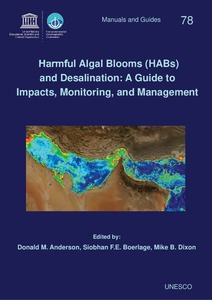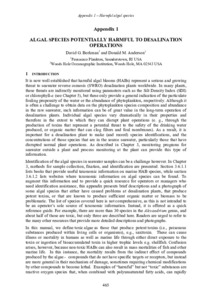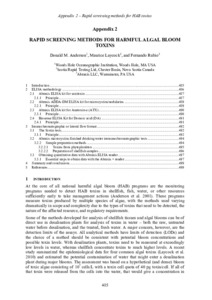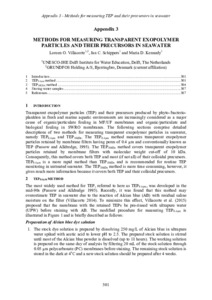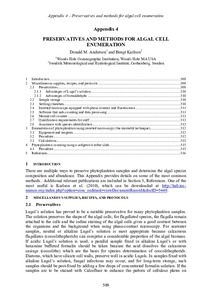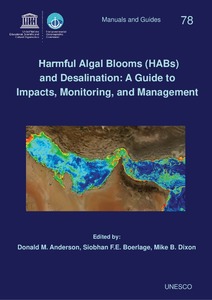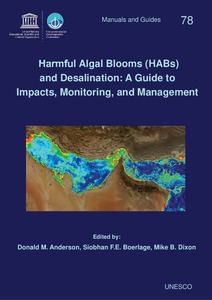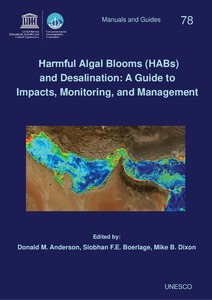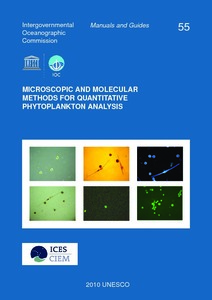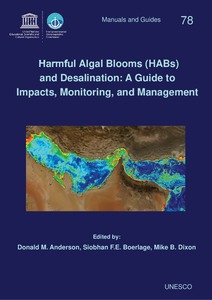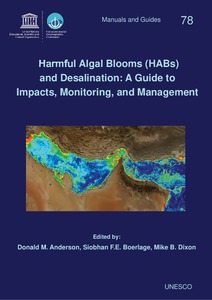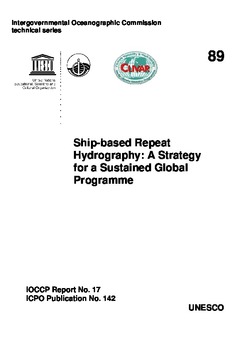Browsing ⇒ IOC: Intergovernmental Oceanographic Commission. Not IODE and GOOS by Subject "Parameter Discipline::Biological oceanography"
Now showing items 1-14 of 14
-
Algal biomass pretreatment in Seawater Reverse Osmosis.
(Intergovernmental Oceanographic Commission of UNESCO, Paris, France, 2017)Harmful algal blooms (HABs) can result in a substantial increase in the organic and solids load in the seawater feed to be treated at a desalination plant. In this chapter, the removal of this material is addressed in ... -
Appendix 1. Algal species potentially harmful to desalinitation operations.
(Intergovernmental Oceanographic Commission of UNESCO, Paris, France, 2017)It is now well established that harmful algal blooms (HABs) represent a serious and growing threat to seawater reverse osmosis (SWRO) desalination plants worldwide. In many plants, these threats are indirectly monitored ... -
Appendix 2. Rapid screening methods for Harmful Algal Blooms toxins.
(Intergovernmental Oceanographic Commission of UNESCO, Paris, France, 2017)At the core of all national harmful algal bloom (HAB) programs are the monitoring programs needed to detect HAB toxins in shellfish, fish, water, or other resources sufficiently early to take management actions (Anderson ... -
Appendix 3. Methods for measuring transparent exopolymer particles and their precursors in seawater.
(Intergovernmental Oceanographic Commission of UNESCO, Paris, France, 2017)Transparent exopolymer particles (TEP) and their precursors produced by phyto-/bacterioplankton in fresh and marine aquatic environments are increasingly considered as a major cause of organic/particulate fouling in MF/UF ... -
Appendix 4. Preservatives and methods for algal cell enumeration.
(Intergovernmental Oceanographic Commission of UNESCO, Paris, France, 2017)There are multiple ways to preserve phytoplankton samples and determine the algal species composition and abundance. This Appendix provides details on some of the most common methods. Additional relevant publications are ... -
Bloom prevention and control.
(Intergovernmental Oceanographic Commission of UNESCO, Paris, France, 2017)Harmful algal blooms (HABs) are a serious and growing problem to many sectors of society, including the desalination industry. The many problems that HABs present for seawater reverse osmosis (SWRO) desalination plants ... -
Case histories for Harmful Algal Blooms in desalination.
(Intergovernmental Oceanographic Commission of UNESCO, Paris, France, 2017)Algae have long been an issue impacting desalination plant operation in areas prone to algal blooms or where macroalgae (seaweeds) and detritus became dislodged from the seabed. Previously and still today, operators and ... -
Guide for designing and implementing a plan to monitor toxin-producing microalgae. 2nd Edition.
(Unesco & IAEA, Paris, France & Vienna, Austria, 2016)The first edition of this manual was first published in 2011 in Spanish. Pigmented phytoplankton is the main primary producer and constitutes the foundation of the marine food webs. Blooms, the explosive growth of ... -
Harmful agal bloom-related water quality monitoring for desalination design and operation.
(Intergovernmental Oceanographic Commission of UNESCO, Paris, France, 2017)Characterization of the raw seawater at plant intakes and monitoring to detect poor water quality events including harmful algal blooms (HABs) is critical throughout the lifetime of a desalination plant. HABs can result ... -
Microscopic and molecular methods for quantitative phytoplankton analysis.
(UNESCO, Paris, France, 2010)A new manual on microscopic and molecular methods for quantitative phytoplankton analysis is available from the IOC in cooperation with ICES. The manual includes illustrated step by step instructions on how to carry out ... -
Real-time Coastal Observing Systems for Marine Ecosystem Dynamics and Harmful Algal Blooms: theory, instrumentation and modelling.
(Unesco, Paris, France, 2008)The proliferation of harmful phytoplankton in marine ecosystems can cause massive fish kills, contaminate seafood with toxins, impact local and regional economies and dramatically affect ecological balance. Real-time ... -
Removal of algal toxins and taste and odor compounds during desalination.
(Intergovernmental Oceanographic Commission of UNESCO, Paris, France, 2017)A major challenge in desalination is the removal of harmful algal bloom (HAB) toxins and taste and odor compounds (hereafter referred to as algal metabolites) using common treatment techniques. Removal of other compounds ... -
Seawater intake considerations to mitigate HAB impacts.
(Intergovernmental Oceanographic Commission of UNESCO, Paris, France, 2017)Seawater intakes are a key element in the design, construction and success of desalination plants. Various intake options exist and are generally classified based on their abstraction depth. Surface ocean intakes abstract ... -
Ship-based Repeat Hydrography: a Strategy for a Sustained Global Programme. A Community White Paper developed by the Global Ocean Ship-based Repeat Hydrographic Investigations Panel for the OceanObs ’09 Conference, Venice, Italy, 21–25 September 2009.
(UNESCO, Paris, France, 2009)Ship-based hydrography is the only method for obtaining high-quality measurements with high spatial and vertical resolution of a suite of physical, chemical, and biological parameters over the full ocean water column, and ...
 Repository of community practices in Ocean Research, Applications and Data/Information Management
Repository of community practices in Ocean Research, Applications and Data/Information Management
